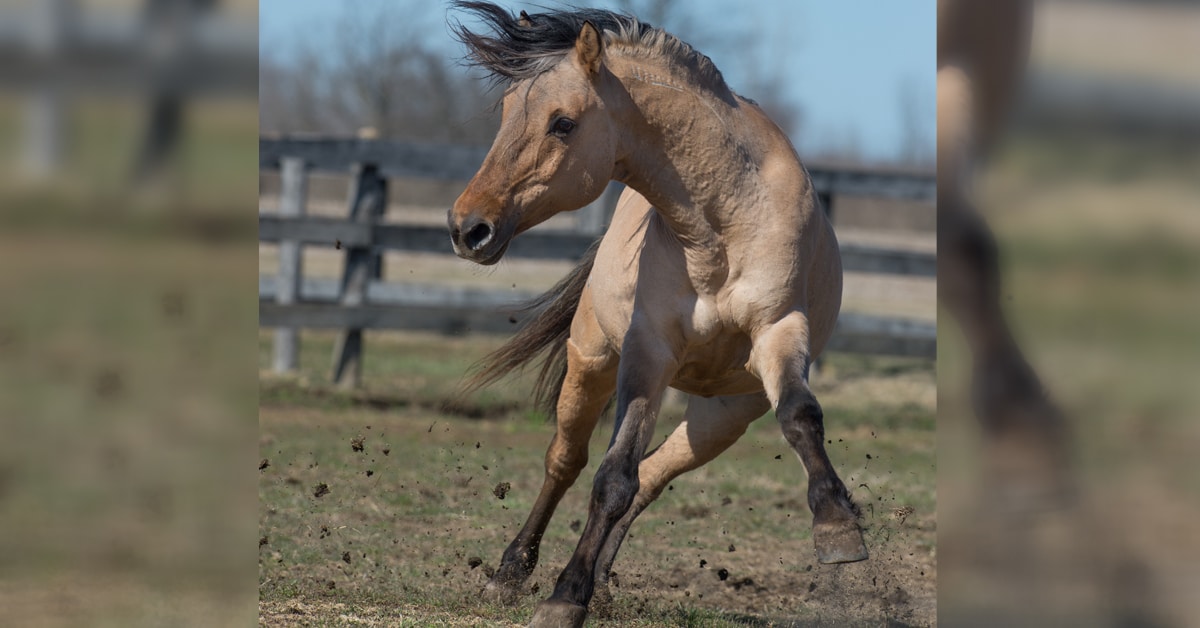We’ve all had the experience of leisurely riding along, our reins at the buckle, relaxed, happy, when out of nowhere our horse leaps sideways, bucks, rears, or bolts out of fear. And more often than not, the source of their fright is something as silly as a plastic bag, a blowing leaf, or an object that was moved from where it had been the day before.
A new research study is underway by the University of Florida to determine if a “spook” gene can be found in horses, and if so, if it can be bred out of them to create a true “bomb-proof” mount.
While the results of the research are about a decade away, scientists are working with young horses made available from the University of Florida’s breeding program. Part of the study involves attached wireless heart-rate monitors to the horses, then turning them out in a round pen. Then at regular intervals within the horse’s field of vision, a person opens an umbrella quickly to see if the animal spooks. The researchers then analyze the horses’ behaviour as well as changes in the heart rate during the spook.
According to an article in Phys.org, thus far the horses seem to fall within two categories. The first group spooked at the umbrella and continued to be frightened and agitated, even continuing to check out the object. The second group spooked but quickly calmed down, continued to graze peacefully, and did not perceive to have the same level or fear and avoidance as the first group.
The next step involves creating a study to isolate genetic makeup that contributes to the spook response. Applications could include finding a calm horse for a timid, young, or older rider, versus a more high-strung horse that might have an edge in the showring.
“Understanding each horse’s genetic makeup will help you understand the type of animal you need,” Samantha Brooks, UF/IFAS associate professor of equine genetics told Phys.org. “If we learn early on what this animal’s natural tendencies are most likely to be, we can make educated decisions on training and future careers to give the horse the best shot to grow into their potential, rather than becoming a problem or danger.”
More from News:





